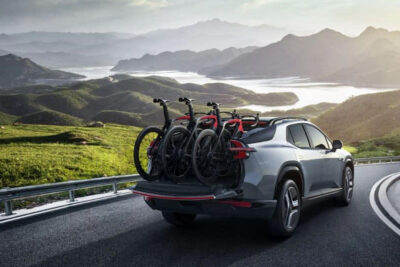Mercedes struggles to sell the electric G Class
As Handelsblatt writes, citing data from the two market research companies Dataforce and Marklines, Mercedes is said to have sold only 1,450 units of the G580 with EQ technology, as the model is officially called, by the end of April 2025 – worldwide. By comparison, Mercedes dealers sold around 9,700 vehicles of the combustion model, which in the case of the G-Class is offered with six- and eight-cylinder engines, in the same period, i.e. almost seven times as many.
The registration figures for individual countries compiled by market researchers also paint a devastating picture: In China, the world’s largest new car market and the most important sales market for electric cars, Mercedes has only been able to sell 58 electric G-Classes since autumn 2024, compared to 61 in South Korea. In the USA, which is also a large market for large SUVs and off-road vehicles, not a single one has been delivered.
The Handelsblatt newspaper quotes an anonymous manager as saying: “The car is like lead at the dealers, it’s a complete flop.”. Another manager put it more diplomatically: “It’s a niche model, the numbers are very low.” In fact, the market for electric luxury vehicles has not developed as once forecast; Mercedes was not the only company to assume higher growth here. In China, in particular, demand is for electric volume models rather than luxury vehicles.
Electric G-Class not convincing customers
Mercedes is keeping quiet about the specific sales targets for the electric G-Class, only stating to Handelsblatt that “sales figures are on target.” The insider information and the sales statistics of the two market researchers were probably not commented on further.
However, part of the problem with the electric G-Class could not only be the general market development in the electric luxury segment, but also the concept of the electric G itself – at least this is the connection made by some of the Handelsblatt insiders. Unlike an EQS SUV, for example, the G580 with EQ technology is not based on a special electric platform, but on the familiar combustion engine model. This means that the electric version cannot utilise the typical electric car advantages of a larger interior with the same exterior dimensions. You can read more about the electric G-Class in our drive review.
Another point is the weight: in order to preserve the iconic character of the G-Class, the battery cells have been integrated into the complex steel ladder frame of the model series. However, according to the report, the ladder frame alone weighs 350 kilograms, plus 58 kilograms for the 26-millimetre-thick underbody plate, which is intended to protect the battery off-road – more than 400 kilograms, and no battery cell has yet been installed. As the battery in the large vehicle has a full 116 kWh, the cells add further weight. The result: the payload of the 3.1 tonne model is only 415 kilograms, the electric G-Class has no trailer coupling and, in combination with the high weight and poor aerodynamics of the body, the WLTP range is only 473 kilometres. Not much for a car whose base price is already close to 150,000 euros.
Even if the electric G-Class (like the combustion engine) has its very own target group, which may or may not consciously choose the iconic off-road vehicle, the consequences of the current demand for the small G-Class (also known as the g-Class) planned for 2027 can no longer be ruled out. Officially, Mercedes is maintaining that this model will only be available as an electric car. “But it is questionable whether it will stay that way,” writes Handelsblatt. A manager is said to have indicated behind closed doors that this is currently being examined. According to an engineer, the additional costs for a petrol version would be ‘manageable’, as only the front end would have to be redesigned.
The G-Class will therefore utilise a mixture of two platforms – Mercedes wants to move away from rigid platforms anyway and instead rely on technology modules that can be flexibly combined for different segments. This is probably also the case in the small G-Class: the basis is to be the new compact car architecture MMA of the CLA, which is designed for electric drives and hybrids. However, the small G will also utilise elements of the MB.EA for medium-sized and large vehicles.
handelsblatt.com (in German)





2 Comments